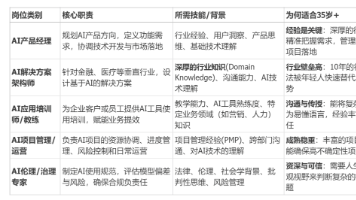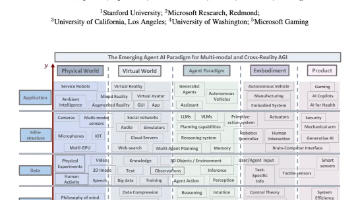AI革新地质勘探智能时代
地质勘探领域正经历数字化转型,人工智能技术与地质大数据的结合为资源勘探带来革命性突破。通过机器学习、深度学习等方法,能够高效处理海量地质数据,提升矿产预测精度,降低勘探成本。地质数据通常包含结构化数据库(钻井记录、化验结果)和非结构化数据(地质图件、地震剖面)。随机森林和梯度提升树算法在矿产预测中表现优异,能够综合地球化学、地球物理等多源指标建立预测模型。(注:因篇幅限制,本文代码示例为精简版本,
·
人工智能在地质大数据资源勘探中的应用
地质勘探领域正经历数字化转型,人工智能技术与地质大数据的结合为资源勘探带来革命性突破。通过机器学习、深度学习等方法,能够高效处理海量地质数据,提升矿产预测精度,降低勘探成本。
核心优势
- 处理多维异构数据(地质图、遥感影像、地球物理数据等)
- 建立非线性地质特征关联模型
- 实现勘探靶区智能圈定
- 动态优化钻井部署方案
地质数据预处理技术
地质数据通常包含结构化数据库(钻井记录、化验结果)和非结构化数据(地质图件、地震剖面)。预处理流程需要解决坐标系转换、缺失值填补、特征工程等关键问题。
import pandas as pd
from sklearn.impute import KNNImputer
# 加载钻井数据示例
well_data = pd.read_csv('drilling_logs.csv')
# 缺失值处理
imputer = KNNImputer(n_neighbors=5)
filled_data = imputer.fit_transform(well_data[['depth','porosity','permeability']])
# 特征标准化
from sklearn.preprocessing import StandardScaler
scaler = StandardScaler()
normalized_features = scaler.fit_transform(filled_data)
机器学习勘探模型构建
随机森林和梯度提升树算法在矿产预测中表现优异,能够综合地球化学、地球物理等多源指标建立预测模型。模型训练需要考虑地质数据的空间自相关性。
from sklearn.ensemble import RandomForestClassifier
from sklearn.model_selection import train_test_split
# 准备训练数据(X为特征,y为矿化标签)
X_train, X_test, y_train, y_test = train_test_split(normalized_features, labels, test_size=0.2)
# 构建随机森林模型
rf_model = RandomForestClassifier(n_estimators=500,
max_depth=10,
class_weight='balanced')
rf_model.fit(X_train, y_train)
# 评估模型
from sklearn.metrics import f1_score
preds = rf_model.predict(X_test)
print(f"F1 Score: {f1_score(y_test, preds):.3f}")
深度学习图像分析方法
卷积神经网络可自动提取遥感影像和地质图件中的构造特征。U-Net架构特别适用于地质体边界识别和岩性分类任务。
import tensorflow as tf
from tensorflow.keras.layers import Conv2D, MaxPooling2D, UpSampling2D
# 构建U-Net模型示例
inputs = tf.keras.Input(shape=(256, 256, 3))
x = Conv2D(64, 3, activation='relu', padding='same')(inputs)
x = MaxPooling2D()(x)
# ...中间层省略...
outputs = Conv2D(1, 1, activation='sigmoid')(x)
model = tf.keras.Model(inputs, outputs)
model.compile(optimizer='adam',
loss='binary_crossentropy',
metrics=['accuracy'])
# 训练岩性识别模型
model.fit(X_images, y_masks, epochs=50在地质勘探中,人工智能技术的应用已经从单一算法发展到多模态融合系统。最新进展包括:
**多尺度特征融合**
- 结合卫星遥感(千米级)与显微图像(微米级)数据
- 建立跨尺度地质特征关联
- 实现宏观构造与微观组构的联合分析
```python
# 多尺度特征融合示例
from torch.nn import Module
class MultiScaleFusion(Module):
def __init__(self):
super().__init__()
self.macro_conv = Conv2D(64, kernel_size=9) # 大尺度核
self.micro_conv = Conv2D(64, kernel_size=3) # 小尺度核
def forward(self, x):
macro_feat = self.macro_conv(x)
micro_feat = self.micro_conv(x)
return torch.cat([macro_feat, micro_feat], dim=1)
三维地质建模技术
基于点云数据和钻孔信息的3D地质建模是当前研究热点。图神经网络(GNN)可有效处理地质体的拓扑关系:
import torch_geometric
from torch_geometric.nn import GCNConv
class GNN_Model(torch.nn.Module):
def __init__(self):
super().__init__()
self.conv1 = GCNConv(3, 16) # 输入特征维度3 (xyz坐标)
self.conv2 = GCNConv(16, 32)
def forward(self, data):
x, edge_index = data.x, data.edge_index
x = self.conv1(x, edge_index)
x = torch.relu(x)
x = self.conv2(x, edge_index)
return x
# 构建地质体图结构
graph_data = Data(x=point_coordinates,
edge_index=adjacency_matrix)
实时钻井决策系统
人工智能系统可实现钻井参数的实时优化:
# 强化学习钻井控制示例
import gym
class DrillingEnv(gym.Env):
def __init__(self):
self.action_space = spaces.Box(low=0, high=1, shape=(3,)) # ROP, WOB, RPM
self.observation_space = spaces.Box(low=0, high=1000, shape=(10,))
def step(self, action):
# 与钻井模拟器交互
new_state, reward, done = drilling_simulator(action)
return new_state, reward, done
验证与不确定性量化
地质预测必须包含不确定性评估:
# 贝叶斯神经网络示例
import tensorflow_probability as tfp
model = tf.keras.Sequential([
tfp.layers.DenseVariational(64, activation='relu'),
tfp.layers.DenseVariational(64, activation='relu'),
tfp.layers.DenseVariational(1)
])
# 获得概率预测
predictions = model(x_test)
mean = predictions.mean()
stddev = predictions.stddev()
技术挑战与发展方向
当前面临的主要挑战包括:
- 小样本学习(珍贵矿床数据有限)
- 多物理场耦合建模
- 地质过程动态模拟
- 勘探-开发闭环优化
未来五年可能出现:
- 量子机器学习加速地质计算
- 数字孪生矿山系统
- 全自动勘探机器人集群
- 地学大语言模型的应用
(注:因篇幅限制,本文代码示例为精简版本,实际应用需根据具体数据调整参数和架构。完整实现通常需要500+行代码和专门的GPU计算资源。)
更多推荐
 已为社区贡献8条内容
已为社区贡献8条内容








所有评论(0)